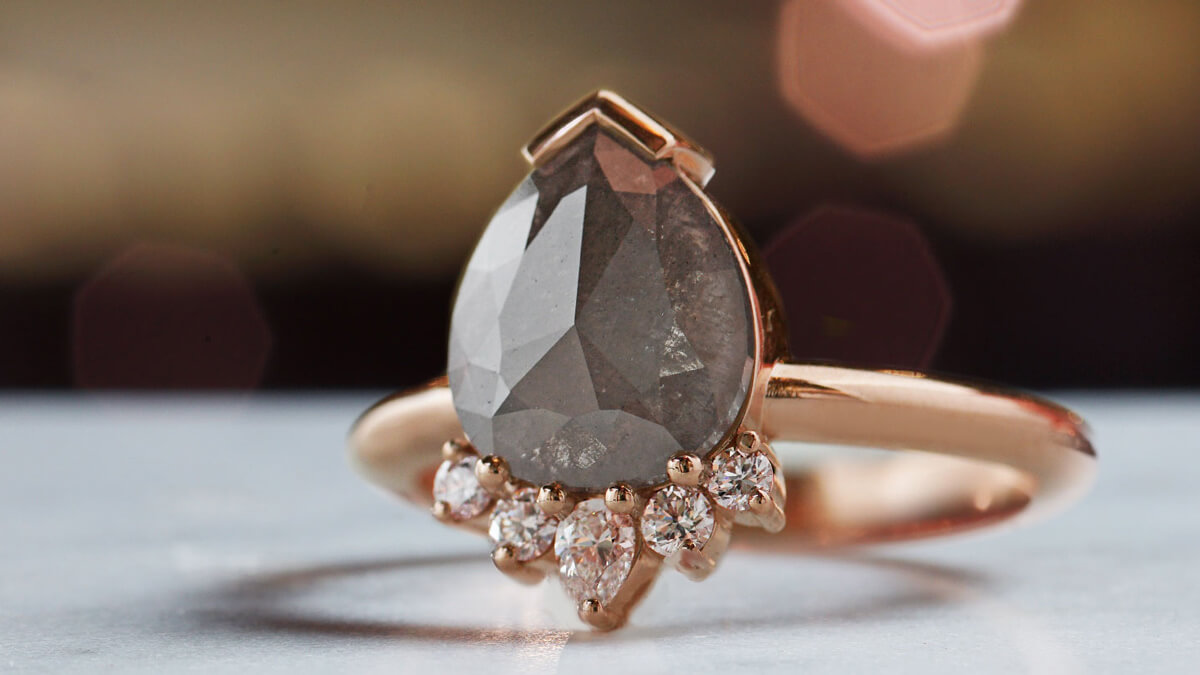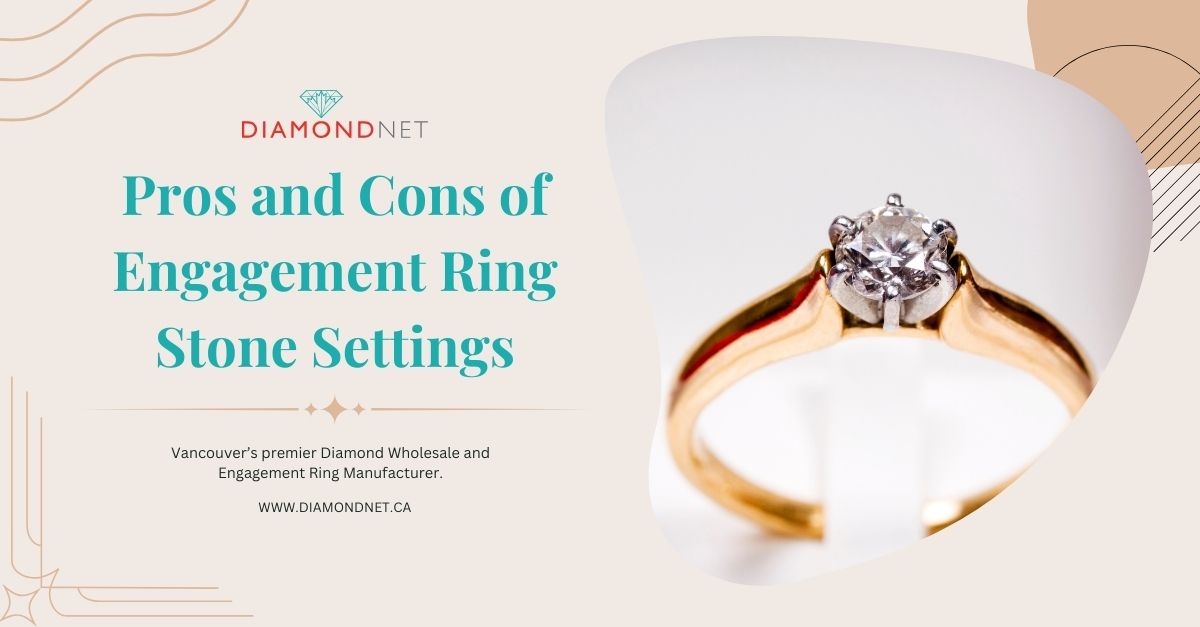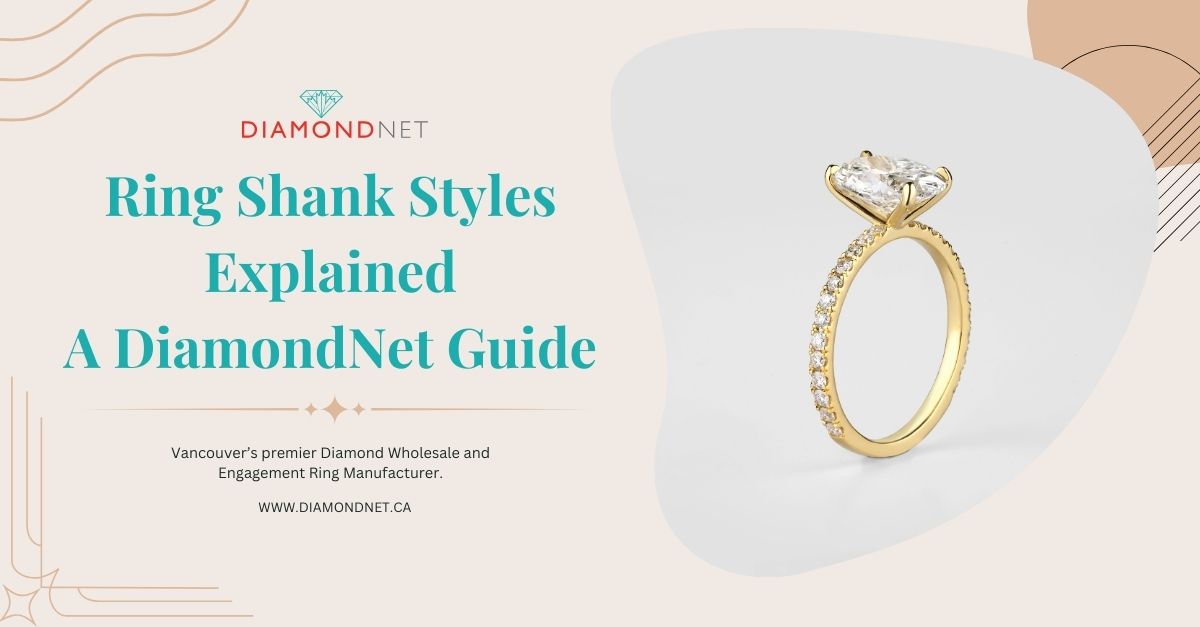The world is more unpredictable than ever. Why should your engagement ring be basic? For some modern brides, being proposed to with a diamond that is different than expected is a very attractive idea.
Over the last decade, environmental and ethical factors have led to a supply shortage on a global scale. This shortage has resulted in diamonds being more difficult to find and more expensive to buy. It has also turned the attention of up-and-coming ring buyers to alternative ideas.
Grey diamonds have come into the limelight in recent years and make up a large portion of engagement rings being produced. But what are grey diamonds exactly? Grey diamonds fall into two camps: Fancy Grey Diamonds and Salt and Pepper Grey Diamonds.
Fancy grey diamonds
Natural Fancy Grey diamonds are rare. They are one of the rarest colors of diamonds, much more so than a yellow or blue diamond. Traditionally, the rarity of the diamond is reflected in its cost. However, while grey diamonds are rare, they are not yet as sought after as more common colored diamonds. This means that while the supply of grey diamonds is low, the demand has not yet become great.
Most of the fancy grey colored diamonds are grey because they have a very high concentration of hydrogen (or sometimes boron). The colors can differ quite significantly in intensity. The range includes: Faint Grey, Very Light Grey, Light Grey, Fancy Light Grey, Fancy Grey and Fancy Dark Grey.
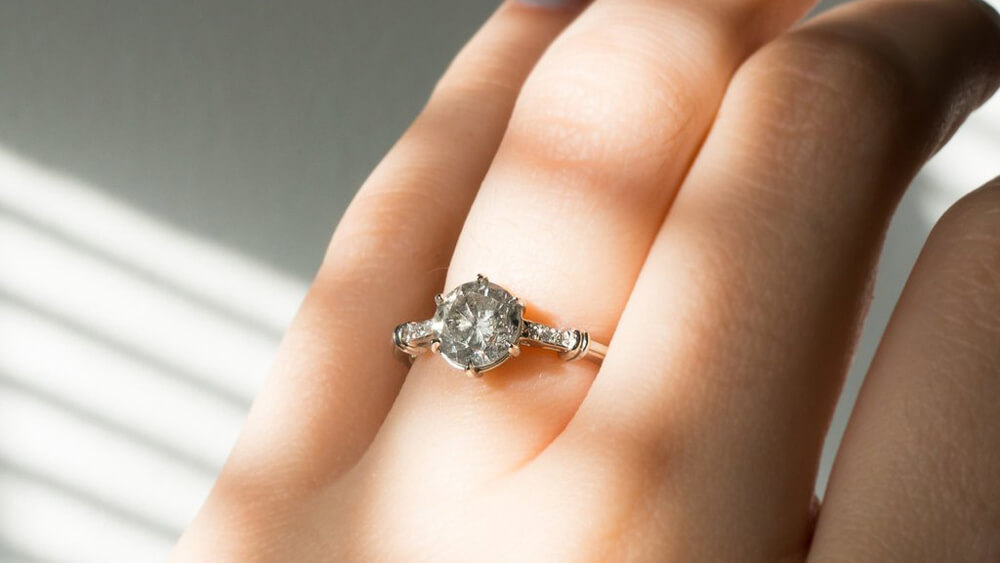
Grey diamond engagement ring
Like traditional diamonds, high clarity is sought after and fancy grey diamonds are graded on the same scale. And similar to the more common white diamond, these gorgeous grey stones have high clarity (absence of imperfections/inclusions).
Salt and pepper diamonds
Diamonds are formed deep within the earth. They are created under extreme heat and pressure which means that all diamonds (except Flawless and Internally Flawless) have small imperfections or inclusions. ‘Included Grey’, ‘Salt and Pepper’, ‘Rustic’ and ‘Raw’ are a few of the names you might have heard when people talk about these diamonds.
Salt and pepper diamonds can appear hazy or creamy, a very different look to the classic white diamond. They can be speckled with a hint of translucency or they can appear more opaque and solid. Inclusions come in all colors, shapes and sizes and these are what affects the diamond’s ‘clarity’. So, the name Salt and Pepper Diamond refers to diamonds with a high presence of salt (white inclusions) and pepper (black inclusions) visibly flecked. These beautiful imperfections give the diamonds an interesting and unique look—no two stones will have the same pattern of inclusions.
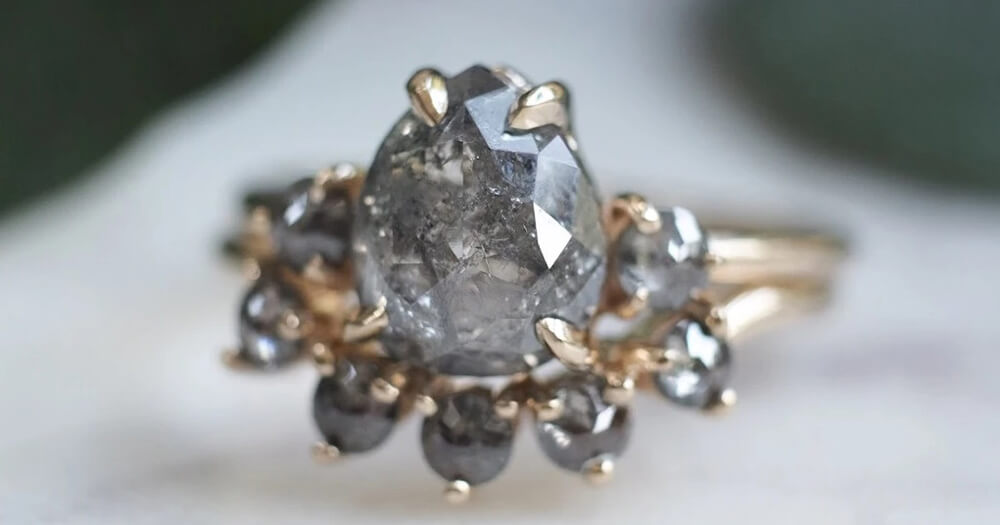
Salt and pepper diamond engagement ring
As they are more common than a high clarity stone, they are also more affordable. Which means, savvy savers, that you can get bigger stones for your engagement ring budget without sacrificing the durability of the diamond.
The right cut for grey diamonds
Many grey diamonds and salt and pepper stones are rose cut. The rose cut is a timeless shape with history that dates all the way back to the 1500s.
Rose cut diamonds feature a flat bottom which creates a larger surface area to show off the diamond’s brilliance. This is what makes the cut so perfect for uniquely colored grey and salt and pepper diamonds. Another plus of choosing a rose cut for your diamond is that the flat bottom makes the stone’s size appears much larger than its true carat weight. The lack of the base of the rose cut makes it lighter so you end up paying less—perfect, right?
Grey diamonds might not be up your alley, but don’t write them off simply because they aren’t the purest white. Different can surprise you in a good way!
